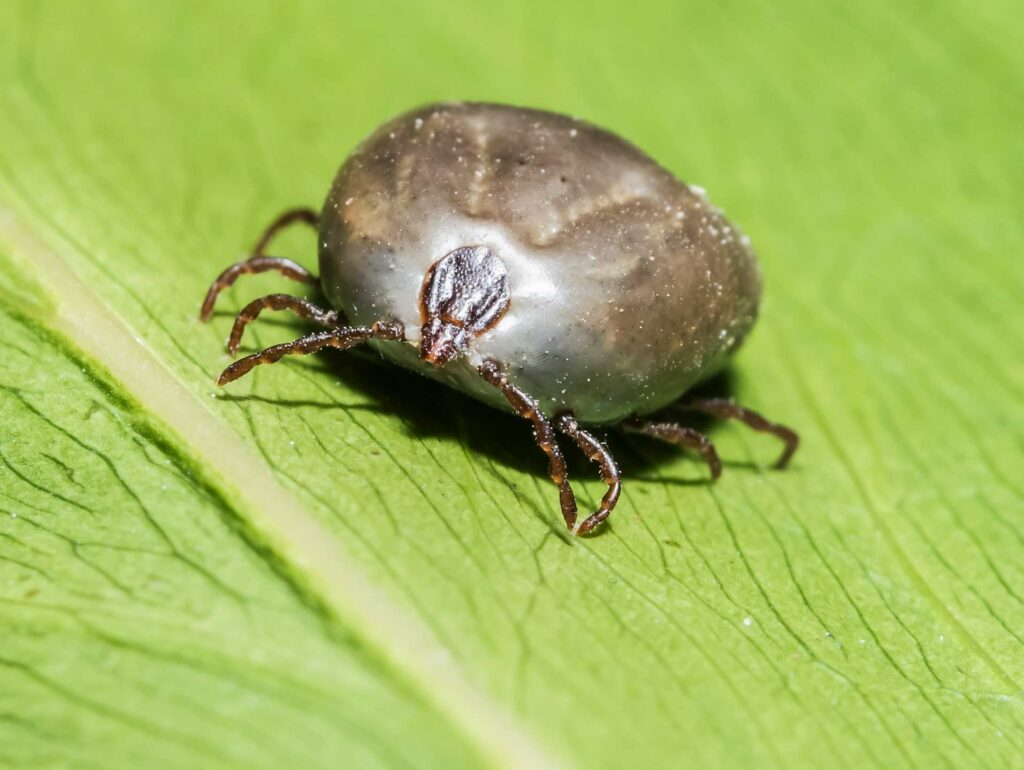In this podcast, Matt Raftery talks about ticks in Massachusetts. He explains the diseases they cause. Then, he talks about control methods including organic sprays.
John Maher: Hi, I am John Maher. I’m here today with Matt Raftery, Manager of Operations at Safer Nature Pest Control, specializing in traditional and organic pest control services in Massachusetts. Today our topic is tick control, Lyme disease, and Powassan virus. Welcome, Matt.
Matt Raftery: Good morning, John. Thanks for having me.
Are Ticks a Problem in Massachusetts?
John: Yeah. So Matt, are ticks a major problem in Massachusetts?
Matt: They are. They’re pretty widespread with health concerns. The biggest one namely would be Lyme disease. Powassan is also a concern. That’s a bit nastier than Lyme disease, if someone were to be infected with it. But by far, Lyme disease is the most widespread here in the state of Massachusetts.
Its main carrier we’ve talked about in an earlier snippet, which you can find on safernature.com, is the white-footed mouse is the known carrier for Lyme disease, where they pick it up at a juvenile and larval stage. And the reason you hear about a lot of people not recognizing that they’ve been infected with Lyme disease is that a juvenile tick is much smaller, and you might not notice that you even have it on you until it’s already dropped off and infected you with Lyme disease.
A lot of times people associate the deer, which it’s the deer tick that does feed upon the white-footed mouse, and certainly deer can propagate ticks, but it’s mainly the adults, sometimes nymphs that feed upon adult or even small deer. But the main carrier of that disease is the white-footed mouse and not the species of deer that we have.
Are Ticks More Prevalent in MA Now?
John: Interesting. Are ticks more prevalent now in Massachusetts than they used to be?
Matt: To a degree, yes, certainly people’s awareness of them has coincided directly with the widespread distribution of Lyme disease. That’s where people’s main health concern by far, that’s the most widespread tick-borne illness, or it’s spread by ticks rather, is a big concern.
And Lyme disease certainly is much more prevalent and it keeps gaining ground throughout the region and beyond. Whereas it started off in Lyme, Connecticut. It was first discovered in the 80s and now it’s very widespread and it’s a big concern because it is a debilitating disease.
Effects of Lyme Disease
John: Tell me a little bit more about Lyme disease and its effects.
Matt: Okay. Well, Lyme disease is spread by the deer tick, which is a smaller version or species of a tick than say, a brown dog tick. So a lot of times, people are even unaware that they’ve been bit by or have a tick on them because in order to transmit Lyme disease, the tick needs to be attached to a host trying to get a blood meal for usually 48 hours.
It can sometimes be 36 hours, and this is what the entomologists at both… I’ve had extensive workshops and meetings with entomologists at the University of Massachusetts Extension Program as well as UConn. They inject a spirochete, which is what is the cause of the disease, and they need to be on a host for usually 48 hours to have that happen.
Most people say to themselves, “Well, I would certainly notice if I had a tick on me for 48 hours.” There are so many cases of people that didn’t even know that they had a tick on them at all. It’s very important when in doubt, get a Lyme disease screening. It’s treatable, you’re going to be a lot better off treating it early than letting it develop. Letting it develop, it can be a very debilitating disease that really can put the brakes on your day-to-day life. It’s a big health concern.
What Is Powassan Virus?
John: And then another virus that is carried by ticks is called Powassan virus. So tell me a little bit about that.
Matt: That one, yeah, that is a much more severe disease. It gets big headlines just because of its severity. It’s not anywhere near as widespread as Lyme disease is. It originated, they believe, in Canada, but has been moved around. There have been known cases of it, but it’s not at the level of where Lyme disease is, but it’s certainly a concern as well.
And that’s where you want to be really militant. Kids and pets, species of ticks can be… different species, brown dog tick as well as the deer tick that moves the Lyme disease really when we get even in the 40 degrees where we’ve had them get picked up during warm spells in January and February when there’s no snow cover. They’re moving slowly, but they’re still active.
And when they come out of inactivity, out of their stasis, they’re going to be searching for a blood meal. So we always tell people, be very militant with your kids and pets and yourselves. Do a tick check. Certainly when in doubt, if you don’t know how long something’s been attached, you can send it to a lab, but it’s not a bad idea to make a visit if that’s a question mark, if you have a tick that’s been attached to you.
Tick Control and Minimization Methods
John: Right. So does spraying for ticks work in terms of controlling their population and trying to keep them out of my yard?
Matt: Absolutely. The main harborage areas, ticks are going to naturally set themselves up to have the highest chance of success for acquiring a blood meal. And that’s going to be where the small rodents go, where hunkering down in leaf litter, taller grasses, certainly the wood lines of properties, but really anywhere where critters are going to go, they’re going to bring the ticks right along with them.
An entomologist at UConn that has done extensive survey studies where he’s found that your average suburban home with a backyard, if you have a reasonably manicured lawn where say, you’re mowing it at least every week or every two weeks, only 2% of a tick population is really going to be found there. 98% of them are going to be in these wood line areas, taller grasses, leaf litter especially. So keeping your yard manicured and clutter-free is a good way to minimize ticks in your yard.
But we also would recommend getting a spray. We come at certain times of the year where the pressure is high enough and we come and spray border sprays in all these hotspot areas where ticks are known to be found. That does give great coverage. However, we remind people you’re only protected in those areas we’ve sprayed. If you have a dog that has an electronic fencing, we need to know exactly where that is, so we can properly treat it, because if your dog goes off into the woods that’s past the area of where we’ve treated, they’re absolutely going to be at risk to pick up ticks.
Spraying for Ticks in Massachusetts
John: Okay. So are you generally spraying a whole yard or just along the edges of the yard in those border areas?
Matt: It’s mainly in the border areas. However, we can and have done regularly full lawn blankets just to be safe. Certainly you don’t need that every time we come, but we might recommend that in the spring after the snow melts for at least just in case you’re unsure, there could theoretically be a tick in that part of the yard. But the follow-up visits are usually the borders.
Organic Tick Control Methods
John: Okay. And are there organic tick control methods and sprays and why might I want to use those?
Matt: Yes, we do have organic treatments available as well. As I was saying with mosquitoes earlier, both are very effective. Sometimes we have to come a little more often if we’re using the organic because that material breaks down. The difference is between tick and mosquitoes, the ticks can’t quite reproduce as quick as mosquitoes can and fly in, but you’re going to want to make sure you have a solid border there on your property for anything that could potentially creep through, especially because they can be carried by other rodents, even if they’re not directly walking across the border area, they could get brought by a rodent.
John: And you said that organic sprays work just as well as traditional ones, except you might just have to come a little bit more often to repeat the spraying?
Matt: Correct.
How Often Should You Spray for Ticks?
John: And how often would you typically recommend coming to do tick sprays?
Matt: Usually we’ll do it in the hotspots, during the activity cycles. We’ll come every two weeks for that, whereas three weeks for the traditional.
Contact Safer Nature to Learn More About Tick Prevention
John: All right. Well, that’s really great information. Matt, thanks again for speaking with me today.
Matt: All right. Thank you for having me, John.
John: And for more information, you can visit the Safer Nature website safernature.com or call (978) 325-1325.


